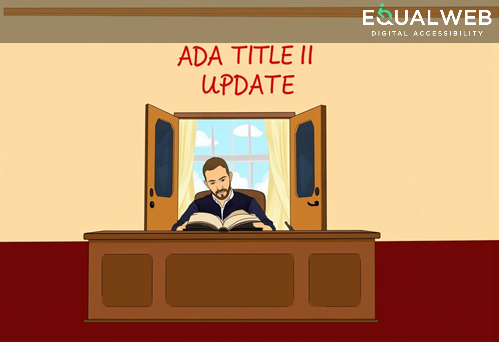The Growing Demand for Digital Accessibility
As more people rely on digital services for everything from shopping to healthcare, accessibility has become a critical requirement for businesses to meet user expectations and needs. With 15% of the global population living with some form of disability, businesses that prioritize digital accessibility are tapping into a significant portion of the market often overlooked by competitors.
User reliance on technology has accelerated in recent years, and companies that fail to meet accessibility needs risk alienating a growing audience. Whether it`s ensuring seamless navigation, readable content, or screen-reader compatibility, accessibility improves user satisfaction across the board.
Accessibility is not just about compliance – it`s about delivering a better user experience for everyone. From customers with visual impairments to those using assistive devices, accessible websites and digital platforms ensure no one is left behind.
Legal Risks of Ignoring Accessibility Standards
Businesses that ignore accessibility standards face more than just user frustration; they open themselves up to legal consequences. Non-compliance with accessibility laws like
ADA compliance in the United States or the Web Content Accessibility Guidelines (WCAG) globally can result in lawsuits, significant fines, and reputational harm.
In recent years, lawsuits over inaccessible websites have surged, affecting companies across industries. High-profile cases have highlighted that businesses can no longer afford to view accessibility as optional. Non-compliance doesn’t just impact the bottom line; it signals a disregard for inclusivity, which damages trust and credibility.
Meeting legal requirements proactively avoids costly litigation and demonstrates your business`s commitment to accessibility. Staying ahead of these standards helps position your brand as a leader in inclusivity rather than risking a reactionary scramble when issues arise.
How Inaccessibility Impacts Your Business and Reputation
An inaccessible website or digital platform excludes potential customers, reduces revenue, and tarnishes your brand reputation. Users with disabilities are not a niche audience – they represent a considerable demographic that businesses cannot afford to ignore.
When customers encounter barriers on your site, such as unreadable text, poor navigation, or missing alternative text for images, they are likely to leave and look elsewhere. This not only results in lost revenue but creates negative perceptions of your brand.
Word-of-mouth travels fast, and users who experience frustration due to inaccessibility may share their experiences publicly, impacting your reputation in the marketplace. Conversely, businesses that prioritize accessibility foster goodwill, attracting loyal customers and improving brand perception as inclusive and forward-thinking.
Accessible websites are not just a requirement; they are a smart business strategy. Providing equal access to all users expands your audience, increases conversions, and showcases your business as an inclusive leader in your industry.
Taking Action Now: Solutions to Ensure Accessibility
The good news is that businesses can take meaningful steps toward accessibility immediately. By adopting accessibility solutions, companies can mitigate legal risks, improve user experience, and enhance their overall digital presence.
Start with a website audit to identify accessibility gaps and areas that require improvement. Address common issues like:
- Adding alternative text for images
- Improving keyboard navigation
- Ensuring proper contrast for text and backgrounds
- Providing captions for video content
Accessibility tools and plug-ins, like EqualWeb`s accessibility tools, make implementing these solutions faster and more efficient. Investing in accessibility is not just about compliance; it`s about delivering a digital experience that is usable for everyone.
Businesses that take action now position themselves as inclusive leaders in their industries. By prioritizing accessibility, you build trust with your audience, drive long-term customer loyalty, and contribute to a more equitable digital world.
Conclusion
Digital accessibility is more than a compliance requirement—it’s a vital component of success in today’s online world. By taking proactive steps to ensure accessibility, businesses can avoid legal risks, improve customer satisfaction, and establish themselves as leaders in inclusivity. The time to act is now—embrace accessibility and create a digital experience that works for everyone.




